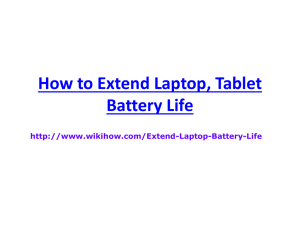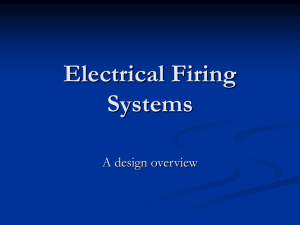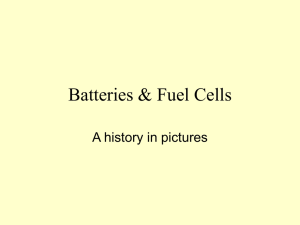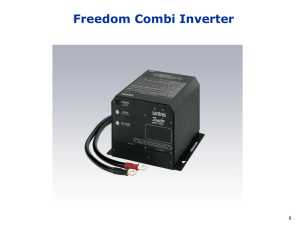Batteries pp
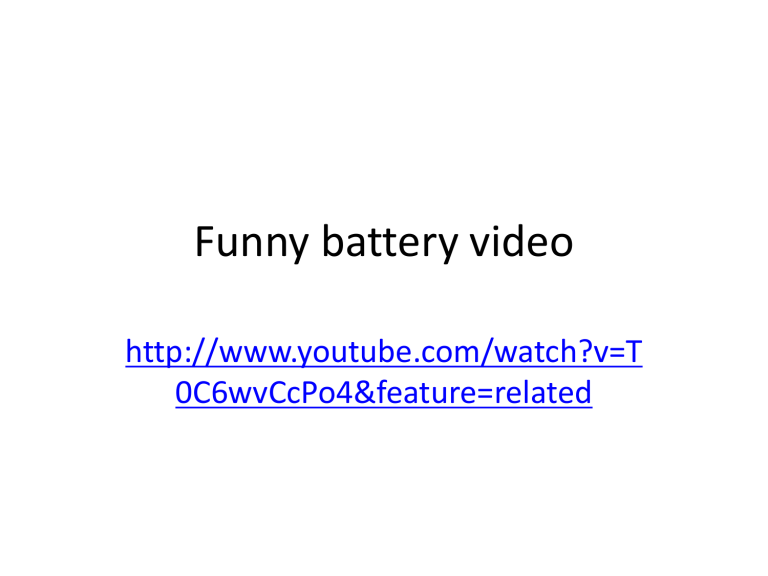
Funny battery video
http://www.youtube.com/watch?v=T
0C6wvCcPo4&feature=related
Batteries
Battery
• An automotive battery is a type of rechargeable battery that supplies electric energy to an automobile.
• It is charged back by the alternator.
Purpose
• A battery supplies power to the starter and ignition system to start the engine.
• A battery also supplies the extra power necessary when the vehicle's electrical load exceeds the supply from the charging system.
• Supplies power to the electrical systems when engine is not running.
Battery
• Automotive batteries acts as a voltage stabilizer in the electrical system.
• An automotive battery converts chemical energy into electrical energy
Battery
Hot weather shortens battery life more than cold.
Heat causes battery fluid to evaporate.
Battery failure happens more in the winter, due to cold starts, which puts more strain on the battery.
Battery
• SPECIFIC GRAVITY
Specific gravity means exact weight.
• A "Hydrometer" or a "Refractometer" compares the exact weight of electrolyte with that of water.
Construction
Rating
Battery are rated in both cold cranking amps and reserve capacity.
Cold Cranking Amps is the amount of amperage a battery can supply at 0 Degrees while maintaining
9.6 volts for 30 seconds
Reserve capacity: The amount of time a battery can supply 10 volts at 25 amps when not being charged reserve capacity is a battery's ability to sustain a minimum vehicle electrical load in the event of a charging system failure
Service of a Battery.
• Heavy corrosion can cause starting problems.
• Disconnect negative battery terminal
• Use baking soda and water to clean corrosion
Charging a battery.
• When charging a battery always connect the positive cable first and the negative cable last
• When removing battery cables disconnect the
Negative cable first and the Positive cable last.
• Reason being, everything metal on the car is negative
Jump Starting
Battery life
• Usually between 3-5 years, but varies.
• While draining the battery to a zero charge will not
"kill" it, it will reduce the potential battery life every time it is drained.
• When you store your vehicle for long periods of time, disconnect the battery at the terminal connections.
• if your battery has fluid reservoirs, you must keep these filled
Battery life
• Over charging of battery, by vehicle charging system or battery charger.
• Undercharging of the battery, due to fault or stop and go traffic.
Battery inspection video
• http://www.cdxetextbook.com/electrical/prin c/batteryMain/testbat_cable.html
Battery construction video
• http://videos.howstuffworks.com/auto/carparts-videos-playlist.htm#video-41111


